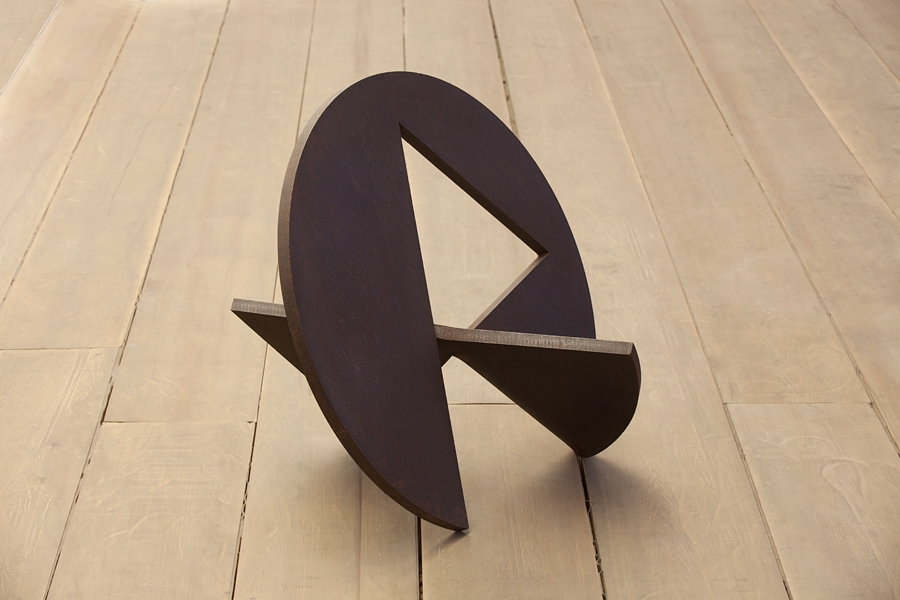‘Drawing is a way of thinking. It is a thought about space.’ Amilcar de Castro, who wrote those words in 1976, made a life’s work of drawing, painting, sculpting and thinking about space, in works whose graceful simplicity leaves much of the richest thinking to the viewer. The act of walking around one of the weathered steel sculptures in de Castro’s Cut and Fold series (1951–2000), to which he devoted much of the last decade of his life, is a 360-degree education in mass and geometry; in the heft and weight of steel; in rust and the passage of time; and in light, shadow and the exquisite forms that can be conjured with the simplest of gestures.
In one of three untitled 1995 sculptures set on the wooden floor at Galeria Marília Razuk and surrounded by de Castro’s paintings, two cuts have been made, forming an acute angle in a circular slab of steel 80 cm in diameter and some 5 cm thick, with the resulting triangle bent away from the disc. In a pas de deux between hard metal and thin air, the sculpture morphs through dozens of unexpected shapes as you circle it. ‘I want to show the space that has not yet been seen’, wrote de Castro, in an undated poem reproduced in the 2010 book Amilcar de Castro. ‘Reinventing space in wonder and without fanfare / But which is new, always new.’
The act of ‘folding’ these monumental pieces of steel was immensely difficult, even when success brought better resources, including the use of a large, well-equipped work space in Nova Lima, in de Castro’s native state of Minas Gerais, where the iron-rich earth cycles through rusty hues like those of de Castro’s sculptures. In a 2002 interview with the art historian Marília Andrés Ribeiro, de Castro described how he first sketched, then modelled his cut-and-fold sculptures in paper. If he liked the result, he would create a small version in metal; and if he liked that, he would increase the size. ‘At first we used a huge metal folding machine,’ de Castro explained, ‘but today we are able to do it without a machine. The plate is placed on top of a rack, and the area of support is heated. The weight of the plate causes it to bend at the same angle as the rack.’
This exhibition of works, brought from what is now the Instituto Amilcar de Castro in Nova Lima and almost all previously unexhibited, includes a set of smaller, stockier sculptures from the 1980s Cut and Displace series, shown along one wall in juxtaposition with a set of complementary paintings, some of which apparently rehearse the same shapes as the sculptures.
As is visible in these and the rest of the 19 paintings featured in the show, de Castro bestowed an intimate, gestural quality on the geometric shapes he was painting, or ‘drawing’, as he insisted on referring to his practice. Using an eclectic collection of domestic and industrial brushes and brooms, he produced single, continuous movements over and over again, looking for the shapes that pleased him and discarding the rest.
An undated 1970s painting that takes pride of place on the back wall was the first in which Castro incorporated colour, filling the gaps between his thick strokes with slabs of deep butter yellow. Some of the other, smaller paintings have slices of colour too, in sea-green, sun-yellow and dull cobalt-blue, but most are monochrome exercises in shape and form; and with their sweeping gestures, intuitive geometry and raw, imperfect edges, they are little revelations in abstract art and in painting, whatever de Castro preferred to call them.
This article was first published in the April 2015 issue.
